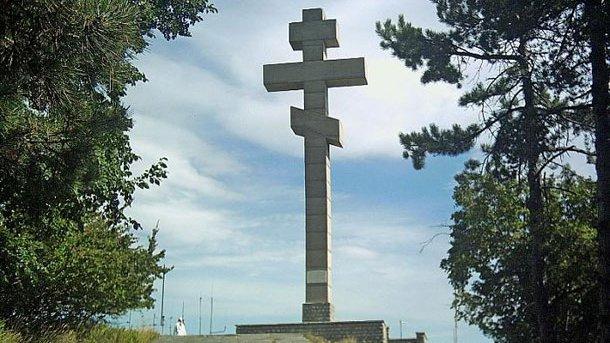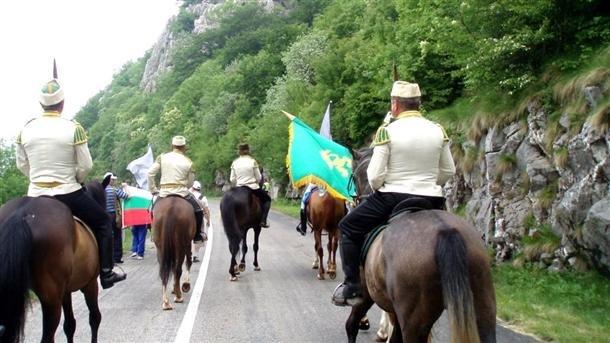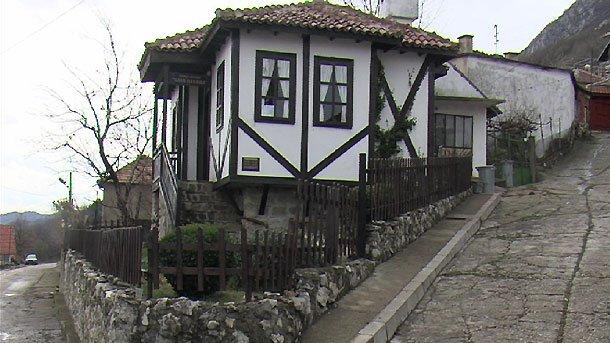One of the biggest events for tourists in Bulgaria is the traditional annual march “In the Footsteps of the Botev Band.” The event gathers a number of people who go along the 120 km trail of the band led by Bulgarian poet and revolutionary Hristo Botev from Kozlodui to the Vratsa Balkan. The route also includes some of the 100 tourist sites of Bulgaria.

© Photo: wikipedia.org
In 1876 the April Uprising started in Bulgaria. It was the peak of the freedom struggle of Bulgarians against 5-century-long Ottoman rule. Hristo Botev, who is one of the most beloved Bulgarian national heroes, organized a revolutionary band in Romania who boarded the Austrian ship Radetzky, sailing on the Danube. On May 17 Botev and the other members of the band forced Austrian captain Dagobert Engländer to stop the ship so they can reach the Bulgarian shore. From there they headed towards the Balkan Mountain but few people joined them on their way. The men started heavy fights with Ottoman military units and the last battle of the band was on June 1, 1876 near the Okolchitsa peak. The deed of Botev has been inspiring for a number of generations and his words “One who falls for freedom never dies,” seem to reflect his own fate.

© Photo: Radio Vidin
The idea for organizing a tourist route along the way passed by the Bulgarian revolutionary was born in 1946, when three tourists started a journey and mapped out the route. This is the year when the national Kozloduy-Okolchitsa march was organized for the first time. The march has become an annual tradition and the number of participants has been constantly rising. Every spring between May 27-June 2, hundreds of enthusiasts follow the steps of Hristo Botev. The route, of course can be passed in other seasons too. There are a few guest houses along the route as well as places for putting up a tent. The Botev’s Route is a historical monument of culture of national significance. Along the way one can see a number of historical sites, related to Botev. One of the stops is the house of Grandmother Iliyitsa, a character from a story by renowned Bulgarian writer Ivan Vazov, dedicated to the heroism of an ordinary Bulgarian woman, who saved one of the members of the Botev’s band of revolutionaries, risking her life.

© Photo: BGNES
Head of the Botev’s Route memorial complex is Rositsa Kuzmanova who told us more about it: “The place where Botev was shot was pointed by one of the other revolutionaries – Nikola Obretenov. A stone monument with an inscription by Bulgarian poetess Elisaveta Bagryana was placed in 1961 at the place. We have placed monuments at other important stops along the route, too. Tourists also get acquainted with the history through literature. For example the Krivolyo area, where revolutionary Pero Herzegovineca died was a place often visited by Ivan Vazov, who enjoyed its natural beauty. Every year in June we organize a folklore program in the Pogledec area, too. Our route has become a truly attractive place for tourists and lovers of history and nature,” Ms. Kuzmanova says.
English version: Alexander Markov
Supposedly, the city of Kabyle that thrived in what is now Southeastern Bulgaria, was named after the Thracian Mother of Gods Cybele portrayed on the rocks of the Zaychi Vrah shrine. It was at the foot of this ancient astronomical..
First city, centre – that is the meaning of the name Pliska, which the founders of the First Bulgarian Kingdom gave to their capital in the 7 th century. They selected a location where major trade routes intersected, whereas the..
Samokov lies just 55 kilometers from Sofia and is best known for its proximity to the ski resort of Borovets. The people who have inhabited these parts through the ages have left abundant evidence – for example stone, wood and paper..

+359 2 9336 661
